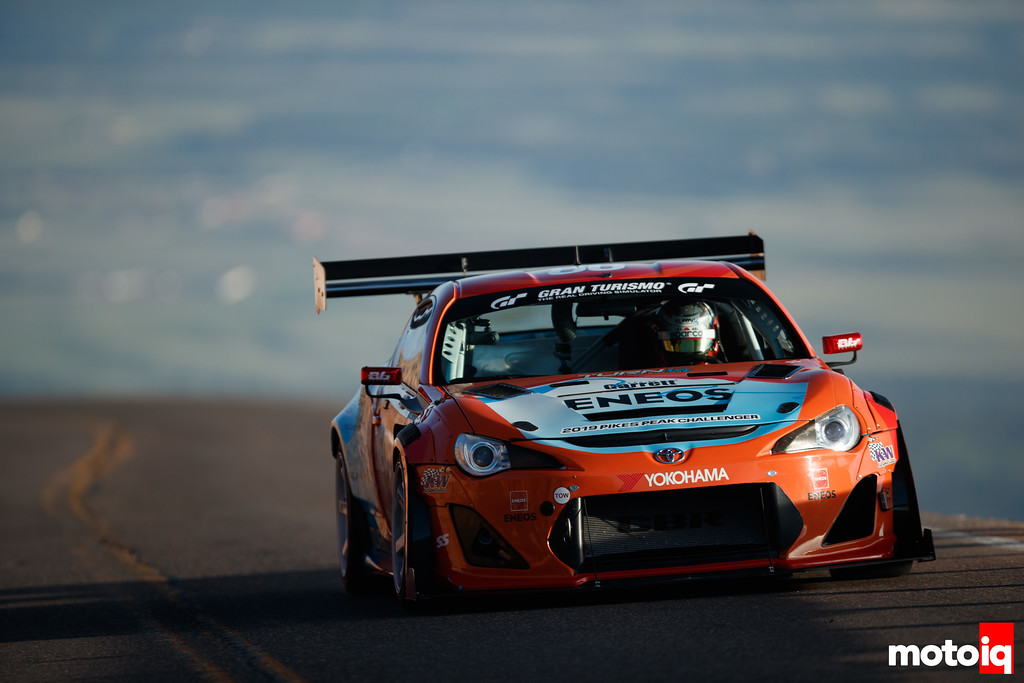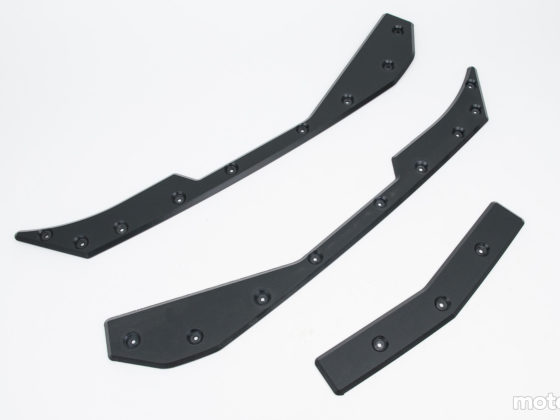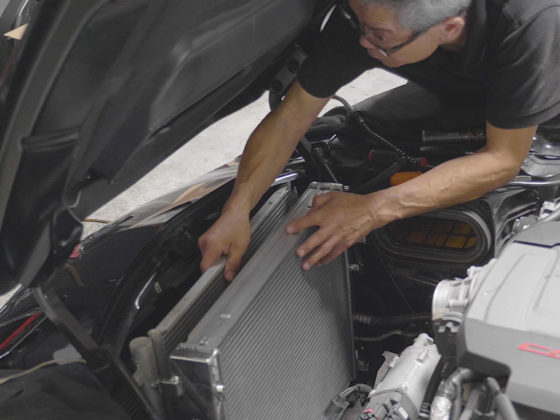
Action Photography by Larry Chen, Messing around stuff by Ed Liu
Our adventure to the 2019 Pikes Peak race to the clouds was the cumulation of two years of work with Evasive Motorsports backed by Eneos Oil as our title sponsor and Turn 14 Distribution our major sponsor. The work started when the deal and the funding to so so was brokered between Evasive and the sponsors. The car was a Toyota 86 that had originally been built in 2013 as a SEMA show car, then converted to a Street Class Time Attack car by Evasive for Mackin Industries. It was about this time that I had started to be involved with the car as I helped with the original suspension set up for it back then.
The cars first competition foray and Evasive’s first outing to Pikes Peak was in 2013 when the car ran up the mountain in pretty much Super Lap Battle trim. In this trip, the car faced fuel delivery and overheating issues and finished in 27th place with a time of 10:59 with Rob Walker driving. In this first trip, the guys at Evasive learned a lot, especially in the department of heat management and fuel delivery at high altitudes. In the thin air of Pikes Peak, it is a struggle to keep the engine, driveline, and brakes cool. It is also hard to avoid vapor lock at these altitudes as well. These were all valuable lessons to be learned by the rookie team.
The next time the car would come to Pikes Peak was in 2016. The FA20 engine was not capable of reliably producing the power needed to climb to the top of the mountain competitively. In the thin air, a cars power drops rapidly as it climbs and it’s not unusual to lose 30% of what it would have at sea level even with turbocharging. Evasive decided it was better to do an engine swap. To keep the support of Toyota, the engine would have to come from the corporate line up and to prevent a protracted and expensive engine development program, a tried and true 2JZ was selected at the powerplant despite it having a lot of size and weight disadvantages.
In this iteration of the 86 a lot of attention was paid to cooling of the bigger and more powerful 2JZ and coolers were added to the differential, transmission and a water spray cooler added to the brakes. With Rob Walker once again driving, the car showed promise, being on track to run a mid 10 minute time. Unfortunately, the car broke a rear axle within sight of the summit and did not finish.
Now for the 2019 effort, the planning went back to sometime in 2017. Rob was no longer available to drive so Dai Yoshihara was selected as the driver and since I work with Dai and Evasive, I got involved and it was time to do some more development. During initial testing, Dai was complaining of on throttle instability and a lack of corner exit traction. The car also had a tendency to understeer due to its 2JZ nose heaviness. In fact, the car’s weight distribution was a front-wheel-drive like 60/40! We did a toe curve check and to our dismay found that the rear wheels actually went into a considerable amount of toe-out under compression.
We changed the rear suspension geometry to correct this so the wheels would actually toe in slightly under compression and we also reduced rear anti-squat, a lesson learned from our Formula Drift car that would help corner exit traction. This tamed the cars instability. We also modded the aerodynamics, adding front diffusers, fender vents, a side vortex generator and eliminating the canards. We also added some aero things that are currently classified to improve front downforce without having to go with large drag-inducing front end parts. As we planned to run in Pikes Peaks time attack class, we were limited to the size of our aerodynamic elements, too aggressive aero and we could be put in the unlimited class.
On the suspension side of things, the KW 3-way motorsports dampers were revalved, and the spring rates increased by about 50% with more bias toward the rear of the car. A lot of this was done to help run the car at a lower ride for better aero performance. This would help with the understeer and the new suspension tuning would also help with the understeer.
For brakes, it was found that the cars original brake system was inadequate for the new heavier and more powerful 2JZ and Stoptech was called in to engineer a new superb brake system custom-tailored to the cars, power, weight, weight bias, tires, and downforce level. The new brakes were really fantastic and were a great contributor to the car’s performance.
A lot of other small but important things were done to make sure that the cars traction control, boost control and drive by wire throttle were operating correctly and the cars thermal management was up to full stuff. The Grid Life event at Road Atlanta was the first test of a lot of the car’s systems and revealed where more work needed to be done. Although we easily won the RWD unlimted class, the axle life was an issue which was corrected with longer axles and relocating the diff for less angularity.
In the upcoming months, a lot of testing was done to make sure everything worked. At the advice of Rhys Millen, the turbo size was reduced to improve throttle response and the diff tuning was changed to allow the car to pivot out of super-tight turns better. The testing was concluded with a full length run at the track to make sure that temperatures could easily be maintained. The team was now as ready as possible and the car was shipped to Pikes Peak.

The Evasive team met up at LAX nice and early, 4:30 in the morning so everyone was grumpy and gulping coffee. The Team consisted of Mike Chang, Team manager and co-owner of Evasive Motorsports, Kelvin Jong, Electronics Data and Engine Control guy, Jason Reinholdt, fabricator and mechanic, Jason Caldejon, mechanic, Ed Liu, Mechanic and yours truely team engineer and chassis guy.

Mike had us booked on some bare-bones airline to fly to Colorado that had padding optional seats but at least we all had exit row seating and lots of legroom!




7 comments
Really cool article Mike, it made me think of a few questions though.
Does the aero noticeably get weaker as the car climbs? if so, would having driver/automatic tuneable suspension make a difference?
The car seem to have small endplates, are those rules limited as well? I would think gigantic endplates would be the default for a course like Pikes Peak.
About the turbo, does it spool up quicker and reach higher RPM in thinner air? So you would get better response but less overall power the higher you go? Unless it’s not limited by the friction on the compressor wheel…
Anyways TIL about racing with oxygen bottles on Pikes Peak.
The aero gets weaker as the car climbs higher, also the turns get tighter and for the most part lower speed. Having driver-adjustable suspension is not that useful because the driver is pretty busy on this course because very little of it is straight and if your chassis guy knows what he is doing the car is balanced high and low-speed aero load or not. A big endplate doesn’t mean much. It gives more room for sponsor logos. The end plates main job is to prevent spillover on the ends of the wing elements or front diffuser for that matter. The ones on our front diffuser also serve as vortex generators so they can only be around a certain size. That is what the weird looking shape is for. At high altitudes, compressor Overspeed and surge are for sure a thing and sometimes you have to reduce boost as the car climbs. Watching that situation is something that is a headache that kicks a lot of people’s ass.
Oh, I thought endplates had a big effect on yaw control, like the shark fins on WEC cars, but if they have a big effect on the budget aren’t they even more useful!? hahaha.
Good to know about boost control at altitude, I just realized that pikes peak is even higher than the Andros Trophy in the french alps. The mexico GP is only half that and they have trouble.
The shark fins don’t do anything in CFD and wind tunnel, at least when they were first tested. They did give more advertising space.
Mike! Do you have any kind of fan setup behind the radiator? Or do you get enough air flow from how fast the car is going up the track?
Yes a pretty large fan, I think its a Spal.
Great article, I love the prep perspective to go with the technical articles.
It seems like you were prepping at Pikes Peak for about a week?